| Location | Bagmati Province, Nepal |
| Extensions | 2006 BS |
| Area | 665 km2 (257 sq mi) |
| Population | 5 Million |
| Endangered | 2003-2007 |
Kathmandu Valley
Kathmandu Valley is a bowl Shaped and most developed valley located in the Bagmati province of Nepal. It obtains an area of 665 km2 (257 sq mi). Along with the most developed among the 17 valleys of Nepal, it is also the largest urban valley with more then 5 million population. There are 150 village development committees (VDCs) and five municipalities in the valley. It is popular with tourists for its unique architecture, and rich culture. It is also an economic hub of Nepal. Kathmandu valley has the Kathmandu city which is the Capital of Nepal.
The Pahari name Kathmandu comes from a structure in the Durbar Square called by the Sanskrit name Kāsṣtha mandapa “Wooden shelter”. This unique temple, also known as the Maru Sattal, was built in 1596 by King Lakshmi Narasimha Malla. The entire structure contained no iron nails or supports and was made entirely from wood.
Kathmandu Valley lies at the crossroads of ancient civilizations of Asia, and has at least 130 significant monuments, including numerous pilgrimage sites for Hindus and Buddhists. Kathmandu Valley has a rich history, dating back to 2000 years ago, as inferred from inscriptions found in the valley.
Historically, the valley and adjoining areas made up a confederation known as the Nepal Mandala. Until the 15th century, Bhaktapur was its capital, when two other capitals, Kathmandu and Patan, were established. Until the 1960s, the Kathmandu Valley was known as the Nepala Valley or Nepa Valley. In 1961 the valley was listed as Kathmandu District, which began referring to the valley as Kathmandu Valley The term Nepa Valley is still used among Newar people and local governments, while senior citizens still tend to refer to the valley as Nepal.
This valley hosts a UNESCO World Heritage Site with seven preserved locations: the centers of the three primary cities, Kathmandu Hanuman Dhoka, Patan Durbar Square and Bhaktapur Durbar Square, the two most important Buddhist stupas, Swayambhunath and Boudhanath and two famous Hindu shrines, Pashupatinath temple and Changu Narayan. In 2003, UNESCO listed the sites as being “endangered” out of concern for the ongoing loss of authenticity and the outstanding universal value of the cultural property. The endangered status was lifted in 2007.
It has 3 beautiful districts Kathmandu, Lalitpur and Bhaktapur.
Kathmandu
Capital of Nepal and the largest city of Nepal, Kathmandu is the most densely populated district of Nepal. It covers an area of 413.69 km². is the seat of federal government and the most populous city in Nepal. Kathmandu is particularly famous for its religious monuments. Various temples, monasteries, and stupas adorn the city’s landscape. Kathmandu is located in the Bagmati Province. Kathmandu is the gateway to tourism in Nepal. It is also the nerve center of the country’s economy. It has the most advanced infrastructure of any urban area in Nepal, and its economy is focused on tourism, which accounted for 3.8% of Nepal’s GDP in 1995–96.
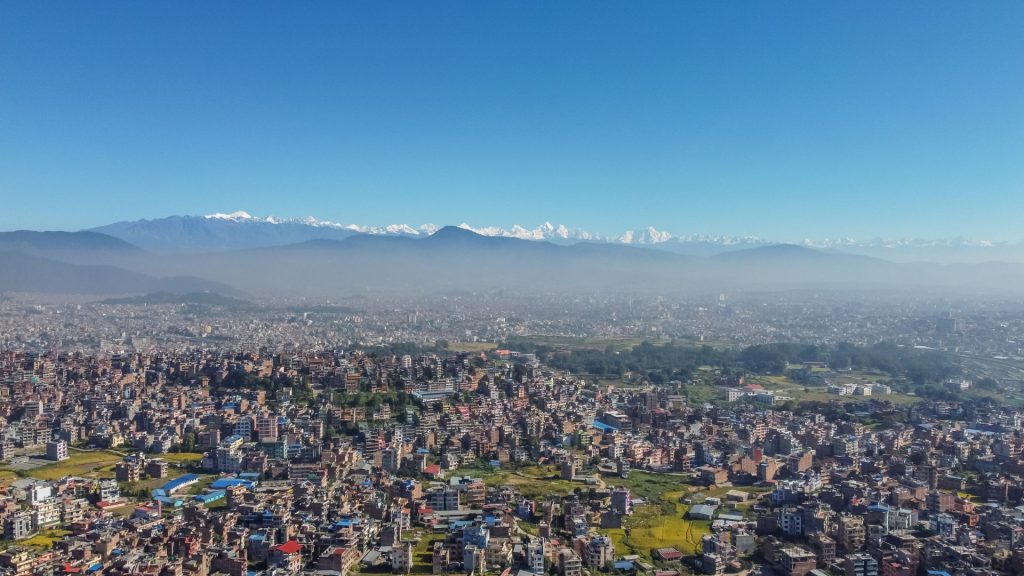
The city is a treasure trove of cultural heritage, home to several UNESCO World Heritage Sites such as the Kathmandu Durbar Square, Swyambhunath Stupa, and Pashupatinath Temple.
YOU MAY ALSO LIKE TO READ: Kathmandu City
Lalitpur
Lalitpur is a city of fine arts. It is situated about 5 km south-east of Kathmandu, the capital of Nepal. It covers an area of 396.92 km2 (153.25 sq mi). It is one of three districts in the Kathmandu Valley, along with Kathmandu and Bhaktapur. also known as Patan, Yala, and Manigal, is a metropolitan city and fourth most populous city of Nepal with 299,843 inhabitants living in 49,044 households per the 2021 census. It is surrounded by Makwanpur, Bhaktapur, Kathmandu and Kavre. There are six municipalities in Lalitpur District, including three Rural Municipalities and one Metropolitan city: Lalitpur Metropolitan City.
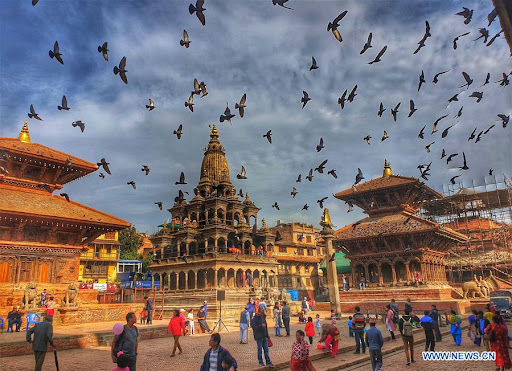
It was due to Lalit’s effort that the god Rato Machhindranath was settled in Lalitpur. Many believe that the name of the town is kept after his name Lalit and pur meaning township. Lalitpur attracts many tourist each year. Of all the activities available to do in Lalitpur, you will more than likely end up in a historical building, museum or temple at one time or another. Lalitpur’s museums are genuine worth the visit, when visiting one of them you can be sure to get a better understanding of the history of the Buddhism and Hinduism cultures. The Patan Durbar Square and The Ashokan Stupas are the beautiful tourist places in Lalitpur.
Bhaktapur
Bhaktapur District located in the eastern part of Kathmandu valley, is the smallest among Nepal’s 77 districts. It is part of Bagmati Province. Area: 123.12 km2 (47.54 sq mi). This marvelous city is also sometimes called the ‘City of Culture’, the Living Heritage’ and ‘Nepal’s Cultural Gem’ and it really lives up to its names. Locally it is also known as Khwopa (Nepal Bhasa: Khvapa) and historically called Bhadgaon.

This city, for now, is setting an example of a better living place. Moreover, it is no less in preventing and preserving its cultural heritage as well. This ancient burgh, surprisingly, was the most powerful kingdom of the Kathmandu Valley during the 14th-16th century of the time. Bhaktapur was the capital of Nepal until the Malla kingdom was divided into three states. There are Bhaktapur Durbar Square, Changunarayan, Nyatapola Mandir, Doleshwar Mahdev Temple Nagarkot and many more places to visit and explore the culture of Bhaktapur.
YPU MAY ALSO LIKE TO READ: Bhaktapur City
Top 10 Sights of Kathmandu Valley
Pashupatinath temple:

The Pashupatinath Temple is one of the holiest and most significant Hindu temples dedicated to Lord Shiva. Located on the banks of the Bagmati River in Kathmandu, Nepal, this ancient temple is a UNESCO World Heritage Site and holds immense religious and cultural importance.
The origins of Pashupatinath date back to 400 AD, although some believe the temple’s existence stretches even further into antiquity, with mythological references linking it to the prehistoric period. Over centuries, the temple has grown in stature and prominence, attracting millions of devotees from Nepal, India, and other parts of the world. It is revered as the seat of Pashupati, a manifestation of Lord Shiva as the “Lord of the Animals” or “Protector of All Living Beings.”
Pashupatinath Temple is an outstanding example of traditional Nepalese pagoda architecture. The temple complex comprises a main temple with a two-tiered roof made of copper and gold. The temple’s main entrance features intricate wood carvings and ornate silver-plated doors. The sanctum houses a four-faced lingam (Shiva lingam), with each face representing different aspects of Lord Shiva: creation, protection, destruction, and blessing. Only Hindus are allowed inside the temple’s inner sanctum.
The atmosphere around Pashupatinath is deeply spiritual, with the constant chanting of mantras, the ringing of bells, and the sound of prayers filling the air. The temple complex is surrounded by a network of smaller shrines and ghats (stone steps along the river), which adds to the serenity and sacredness of the site.
There are several myths surrounding the origin of the temple. One popular legend tells of Lord Shiva transforming into a deer and wandering through the forests of Kathmandu to escape his divine responsibilities. When the gods eventually found him, they pleaded for his return, and Shiva agreed. It is said that during this event, Shiva blessed the place where the temple now stands.
Pashupatinath Temple remains a pivotal site for the followers of Lord Shiva and a symbol of Nepal’s deep-rooted religious and cultural traditions. With its ancient history, spiritual ambiance, and architectural beauty, the temple continues to inspire awe and devotion among millions of pilgrims and visitors each year. It plays a significant role in the Maha Shivaratri festival, when thousands of devotees gather to offer prayers and participate in elaborate rituals. During this time, the temple becomes a hub for both religious devotion and cultural celebration. Another key ritual that takes place at Pashupatinath is the cremation ceremonies on the banks of the Bagmati River, which is believed to lead the soul to moksha (liberation).
FOR MORE PLEASE GO TO: Pashupatinath Temple
You may also like: Muktinath Temple
Swyambhu Mahachaitya :

Swayambhu, one of the most iconic and sacred sites in Kathmandu, Nepal, sits atop a hill in the Kathmandu Valley. Renowned for its historical and cultural significance, this ancient religious complex has earned recognition as a UNESCO World Heritage Site. Importantly, it holds a special place in both Hinduism and Buddhism. The complex features a central stupa, along with various shrines, temples, and prayer wheels, which attract pilgrims from both religions. The gilded spire of the central stupa, adorned with the all-seeing eyes of the Buddha, stands as a recognizable symbol of Nepal.
Furthermore, the site offers breathtaking panoramic views of the Kathmandu Valley and the surrounding Himalayan mountains. As a result, Swayambhu serves not only as a religious center but also as a popular tourist destination. Its resident monkey population, which has earned it the nickname “Monkey Temple,” adds to its charm.
Visitors can explore Swayambhu’s rich history, experience the spiritual atmosphere, and enjoy the serene surroundings, while gaining insights into Nepal’s cultural and religious diversity. The site remains a place of worship, meditation, and reflection for both locals and tourists alike. According to history, Swayambhu Purana reveals that Swayambhunath emerged from a lotus flower. Major festivals, such as Buddha Jayanti (celebrated in April or May) and the month-long Gunla celebration (in August or September), are observed here.
Resting on a hillock 3 km west of Kathmandu, Swayambhu overlooks most parts of the valley, offering visitors a panoramic view of the city. Since the 1970s, visitors who struggled to pronounce its name began calling it the “Monkey Temple.” The stupa has stood for centuries as a symbol of faith and harmony, incorporating Hindu temples and deities within its Buddhist site. Legend states that the glory of Kathmandu Valley originated from this very point. More than 2,000 years ago, the valley was created from a primordial lake, and the stupa evolved spontaneously at this site. To this day, Swayambhu remains the oldest stupa of its kind in Nepal, with numerous shrines and monasteries enhancing its sacred grounds.
Buddha stupa/ Boudhanath Stupa:

Buddha Stupa, also known as Boudhanath, Khasti Chaitya, and Khsa Chaitya, stands as both an architectural wonder and a spiritual icon in the heart of Kathmandu, Nepal. Nestled approximately 11 kilometers northeast of the city center, this massive stupa features a mandala design, making it one of the largest spherical stupas in both Nepal and the world.
In 1979, Boudha Stupa earned recognition as a UNESCO World Heritage Site, which further solidified its global significance. Alongside Swayambhu, Boudhanath consistently draws numerous tourists and pilgrims, cementing its place as one of the most visited sites in the Kathmandu area. Originally, builders constructed stupas to house holy relics, and some claim that Boudhanath contains the relics of the past Buddha, Kashyapa. Others, however, believe it holds a piece of bone from the skeleton of Siddhartha Gautama, the historical Buddha.
Around the base of the stupa, 108 small images of the Dhyani Buddha Amitabha are set, with 108 being an auspicious number in Tibetan culture. Additionally, 147 niches house rings of prayer wheels, arranged in groups of four or five. As a testament to Nepal and Tibet’s enduring spiritual traditions and vibrant cultures, Boudha Stupa continues to inspire devotion and reverence.
While time may have brought changes to the surrounding landscape, the stupa remains a steadfast symbol of faith. Visitors can immerse themselves in the rich history, traditions, and spirituality that surround Boudhanath, ensuring a profound experience for all who walk its sacred grounds.
Bhaktapur Durbar Square :
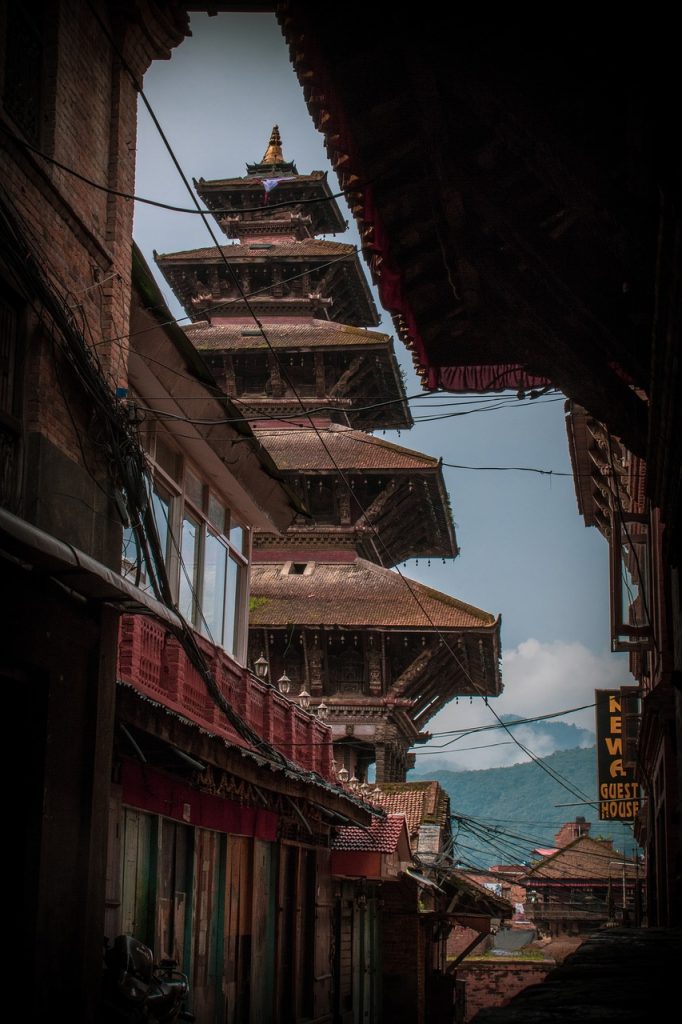
Bhaktapur Durbar Square undoubtedly stands as one of the best places to explore in Bhaktapur City. Located just 15 kilometers from Kathmandu, Bhaktapur offers a profound cultural and spiritual experience. In fact, it is the very reason travelers often prefer visiting Bhaktapur. Although the municipality covers only 6.889 square kilometers, it is home to numerous temples and remarkable monuments. Within it lies Bhaktapur Durbar Square, a smaller space that embodies the richness of Newari art, architecture, and history. Here, visitors can sit for hours on the pedestals of rest houses or temples, admiring the magnificent poses of Shalabhanjika, the elegant female figure standing beside a tree and holding a limb.
Moreover, Bhaktapur Durbar Square offers both a religious and historical sightseeing experience, as visitors can witness an equal number of temples and surviving palaces and monuments. Bhaktapur itself, often described as an anciently choreographed city, has earned the title of an open museum. Here, you can marvel at incredible structures dating back to the 18th century. Among these, the Royal Palace is one of the most captivating attractions.
It is believed that King Jayasthiti Malla built the first palace in the current Durbar area in the late 13th century. Although no remains of this initial palace, Yuthuniman Rajkula, exist today, the current palace still offers much insight into the history and contributions of various kings. However, it is certain that Bhaktapur Durbar Square reached its peak during the reign of King Bhupatindra Malla. He transformed this area into a world of extraordinary architecture, which is why it was added to the UNESCO World Heritage list in 1979, along with the Changu Narayan Temple, one of the oldest temples in Bhaktapur.
Additionally, Bhaktapur is often referred to as a “museum of medieval art and architecture” due to its numerous examples of sculptures, wood carvings, and colossal pagoda temples, each dedicated to various gods and goddesses. Located just 15 kilometers from Kathmandu, Bhaktapur offers a profound cultural and spiritual experience.
Major Attractions of Bhaktapur Durbar Square
55 Window Palace
This palace stands as the main architectural structure dominating Durbar Square. Built in the 15th century, it showcases magnificent craftsmanship. A statue of King Bhupatindra Malla, seated on a huge column, can be seen in a prayerful position, honoring God.
Golden Gate
Serving as the main entrance to the palace, the Golden Gate is a true masterpiece. The craftsmanship is so exquisite that it’s often said the artist who created it must have been divinely inspired. Its eternal beauty continues to amaze visitors.
Lion’s Gate
This gate features two beautiful stone statues of Hindu deities on either side. However, a tale says that after the artisans completed their work, a jealous Bhadgaon King had their hands cut off so they could never replicate such beauty elsewhere.
Mini Pashupati Temple
Also known as the royal dream temple, this structure has an intriguing legend. Folklore states that a Bhadgaon King, a devout follower of Lord Pashupati, dreamed of the deity, who instructed him to build a temple in front of the palace.
Vatsala Temple
Dedicated to the mother goddess, this temple is filled with intricate stonework. Known for its “dog-barking bell,” the temple holds a belief that when the bell rings, it signals an impending death.
Nyatapola Temple
Nyatapola is the most famous pagoda in Nepal, with “Nyatapola” meaning five tiers in the Newari language, symbolizing the five basic elements. This is the highest pagoda ever built in Nepal, and its architectural perfection and artistic beauty are unparalleled. It is dedicated to Siddhilaxmi, the tantric goddess of supreme power and success.
Bhairava Nath Temple
Lastly, Bhairava Nath Temple honors Bhairava, the god of terror and death. This temple remains a place of reverence and awe, reflecting the power and fear associated with the deity.
Through these significant attractions, Bhaktapur Durbar Square continues to stand as a testament to the city’s rich cultural heritage and its deeply rooted religious traditions.
To know more about Bhaktapur please go to: Bhaktapur City
Nagarkot:

Nagarkot, a former Village Development Committee located 32 km east of Kathmandu in Bhaktapur District, became part of Nagarkot Municipality in 2015. According to the 2011 census, it had a population of 4,571 and contained 973 houses. Situated at an elevation of 2,195 meters, it ranks as one of the most scenic spots in Bhaktapur District. Visitors know Nagarkot for its breathtaking sunrise views of the Himalayas, including Mount Everest and other peaks of the Himalayan range in eastern Nepal. Additionally, it offers stunning views of the Kathmandu Valley, making it a popular hiking destination for tourists.
Moreover, Nagarkot provides one of the broadest views of the Himalayas in the Kathmandu Valley, with eight of Nepal’s thirteen Himalayan ranges visible from this vantage point. These ranges include the Annapurna, Manaslu, Ganesh Himal, Langtang, Jugal, Rolwaling, Mahalangur (Everest), and Numbur ranges. Visitors can also enjoy the views of the Kathmandu Valley and Shivapuri National Park from here.
One key advantage of Nagarkot is its close proximity to the capital. Travelers can easily access Nagarkot from Kathmandu without spending much time or money on travel. Furthermore, accommodation and food are both affordable, making Nagarkot a cost-effective destination that wins on all fronts.
Things to do in Nagarkot:
- Paragliding
- Nature trail
- Hiking trail
- Nagarkot Buddha Peace Park
- Sunrise view
- Nagarkot Viewpoint Tower
With these activities and its scenic beauty, Nagarkot remains a perfect getaway for nature lovers and adventure seekers alike.
Thamel:
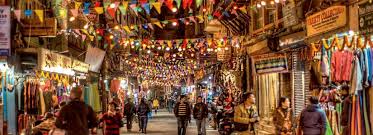
As the tourist district of Kathmandu valley, Thamel bustles with activity late into the night. Located just a 10-minute walk from the center of Kathmandu, it stands in stark contrast to the rest of the city. Thamel caters entirely to tourists with its numerous hotels, rows of restaurants and bars, bookshops, inviting souvenir stores, cyber cafes, and travel agencies. During the hippie era, many artists traveled to Nepal via the Hippie Trail and stayed in Thamel for weeks, solidifying its position as the epicenter of Kathmandu’s tourism industry. Today, Thamel remains the main tourist destination in the Kathmandu Valley, offering everything a tourist could need, including friends and travel companions.
Moreover, Thamel is excellent for shopping, offering a wide range of trekking and mountaineering gear, travel accessories, and souvenirs. Recognized as the most popular and vibrant tourist destination in Nepal, Thamel is situated in the city’s center and is known for its short lanes filled with an eclectic mix of shops, vendors, restaurants, and pubs. For over a century, this vibrant neighborhood has been at the heart of Kathmandu’s tourism industry and continues to be a must-visit location for travelers to Nepal.
Since the hippie era, when artists flocked to Nepal via the Hippie Trail and stayed in Thamel for extended periods, the area has remained a key tourist hub. Given its compact size, Thamel’s attractions are easily accessible by foot. However, visitors should prepare to navigate through a bustling crowd of people, bikes, and rickshaws, as the streets can become quite packed. For a comfortable visit, it’s best to wear sturdy shoes and dress appropriately for the weather.
In addition to walking, visitors can rent bicycles or motorcycles to explore the area more efficiently. While taxis and car rentals are available, they can be pricier compared to other modes of transportation. Thamel is also a shopper’s paradise, offering everything from traditional Nepalese handicrafts to clothing, gear, and souvenirs. Since bargaining is common, shoppers can engage with vendors and explore the many shops lining the vibrant streets.
Changunarayan:

Changu Narayan, an ancient Hindu temple, stands proudly on a high hilltop known as Changu or Dolagiri in Changunarayan Municipality of Bhaktapur District, Nepal. Located about 7 miles (12 km) east of Kathmandu and a few miles north of Bhaktapur, this temple commands a scenic view, with the Manohara River flowing beside the hill. Revered by Hindus, the temple is dedicated to Vishnu and is considered one of the oldest temples in Nepal.
Additionally, Changu Narayan is one of the most elaborate temples in the Kathmandu Valley, known for its rich wood and stone carvings. Originally built in a two-tiered pagoda structure, the temple was reconstructed in 1702 after a fire destroyed the older structure. During excavations, researchers discovered a stone tablet, Shilapatra, dating back to the 5th century, which is the oldest such inscription found in Nepal.
Furthermore, the main courtyard of the temple houses several smaller temples and intricately carved idols of gods. These carvings, created between the 5th and 12th centuries, represent the highest concentration of ancient art in Nepal. The temple was once surrounded by a champak tree forest and a small village named Changu. According to legend, a Kashmiri king gave his daughter, Champak, in marriage to the prince of Bhaktapur, leading to the temple being named after her.
In recognition of its cultural and historical significance, UNESCO declared the temple a World Heritage Site in 1979. Considered the oldest temple in Nepal, Changu Narayan serves as a milestone in Nepali temple architecture, featuring rich embossed works and preserving centuries of artistic heritage.
Chandragiri Cable Car Top station:
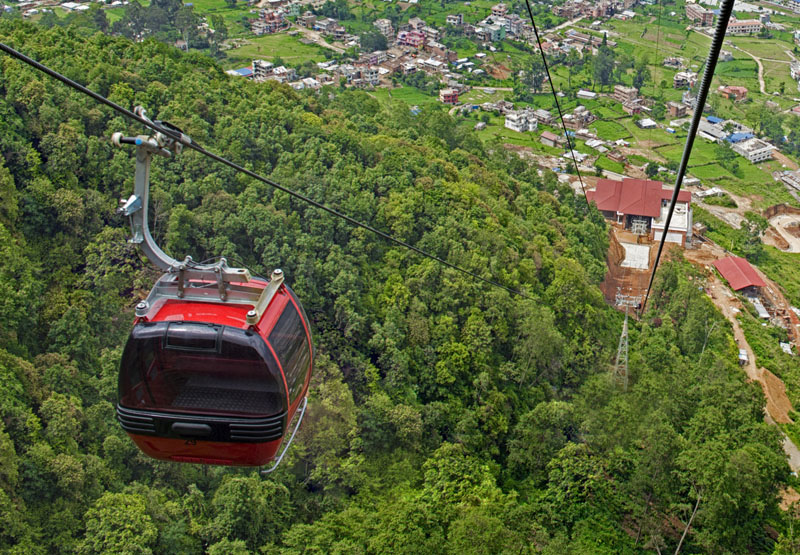
Chandragiri Cable Car, a gondola lift transportation system, operates in Chandragiri Municipality, Nepal. Opening its doors to the public in 2016, the cable car transports passengers from Thankot to Chandragiri Hills. Spanning 2.4 km (9,095 ft), the line features two stations. From the hilltop, visitors can enjoy panoramic views of the Kathmandu Valley and the Himalayan ranges, stretching from Annapurna to Everest.
Moreover, the cable car provides easy access to the Bhaleshwor Mahadev Temple, which stands atop Chandragiri Hill. This site holds historical significance as it is where Prithvi Narayan Shah decided to annex the beautiful Nepal Valley into his Gorkha Kingdom. Visitors experience the thrill of witnessing the stunning Kathmandu Valley, its landscapes, and the surrounding mountains while riding the cable car.
Chandragiri Hills, recognized as one of Nepal’s most beloved day-trip destinations, also serves as a popular hiking spot. Walking around the hills allows tourists to breathe in the fresh air and admire the natural beauty of the countryside. At the mountain top, the main attraction of Chandragiri Hill offers breathtaking views of the Himalayan mountain ranges. From the top, visitors can observe the green valley of Kathmandu below, with growing urbanization sprawling across the landscape.
Additionally, Chandragiri Hill offers an ideal combination of natural beauty and cultural significance, making it a major tourist attraction. The best time to visit is during spring and fall, although winter sometimes brings snowfall to the area. Enhancing the cultural diversity of the hill, the Bhaleshwor Mahadev Temple stands as a pristine shrine. Featuring typical Nepalese pagoda-style architecture, the temple boasts wooden grid windows and wall carvings of gods and goddesses. Outside the temple, a statue of King Prithvi Narayan Shah stands tall against the backdrop of white mountain peaks.
This hilltop site carries immense historical importance, as King Prithvi Narayan Shah is said to have prayed and meditated here before unifying Nepal and conquering the Kathmandu Valley. It is believed that he received blessings from Bhaleshwor Mahadev for his devotion. After the unification, Chandragiri Hill became one of the four key trade passes for the country.
The cable car system itself includes 38 gondolas, capable of transporting 1,000 people per hour. The 2.4 km cable car ride takes approximately 9 minutes to reach the top station of Chandragiri Hills, with each cabin accommodating up to 8 passengers. A child taller than 3 feet requires a ticket for the ride, making the journey a fun and accessible experience for families and visitors of all ages.
Narayanhiti Durbar/ Royal palace:

Narayanhiti Royal Palace, located in the heart of Kathmandu, Nepal, stands as an iconic symbol of Nepal’s monarchy and history. The palace, now a museum, once served as the primary royal residence for the Kings of Nepal. Built in the 1960s, it was commissioned by King Mahendra to replace the older palace that had been destroyed during an earthquake. The design of the palace reflects a blend of traditional Nepali architecture with modern influences, symbolizing the power and grandeur of the monarchy.
The name “Narayanhiti” combines two words: Narayana, referring to the Hindu god Vishnu, and Hiti, which means a water spout in the Newari language. This name reflects the palace’s proximity to a water spout dedicated to Vishnu that lies near the entrance.
Situated in the bustling district of Durbar Marg, Narayanhiti covers a vast area and is surrounded by lush gardens. The palace has witnessed significant moments in Nepal’s history, including royal ceremonies, diplomatic events, and tragic incidents, the most infamous being the Nepalese Royal Massacre of 2001. During this event, Crown Prince Dipendra allegedly killed several members of the royal family, including King Birendra and Queen Aishwarya, before succumbing to his own injuries. This tragic event shook the nation and eventually contributed to the monarchy’s downfall.
Following the end of Nepal’s monarchy in 2008 and the establishment of the country as a republic, Narayanhiti Palace was transformed into a museum in 2009. The museum now allows visitors to explore the opulent rooms of the palace, including the Throne Room, the State Banquet Hall, and the private chambers of the royal family. The museum also displays royal artifacts, furniture, gifts from foreign dignitaries, and relics of the country’s rich history.
One of the key highlights of the museum is the Golden Throne, where the kings of Nepal once sat during royal functions. The palace also provides insight into Nepal’s political changes, showcasing the transition from a monarchy to a democratic republic.
Narayanhiti Palace remains a popular tourist destination in Kathmandu, offering visitors a glimpse into the life of Nepal’s royal family and the country’s cultural heritage.
Patan Durbar Square:
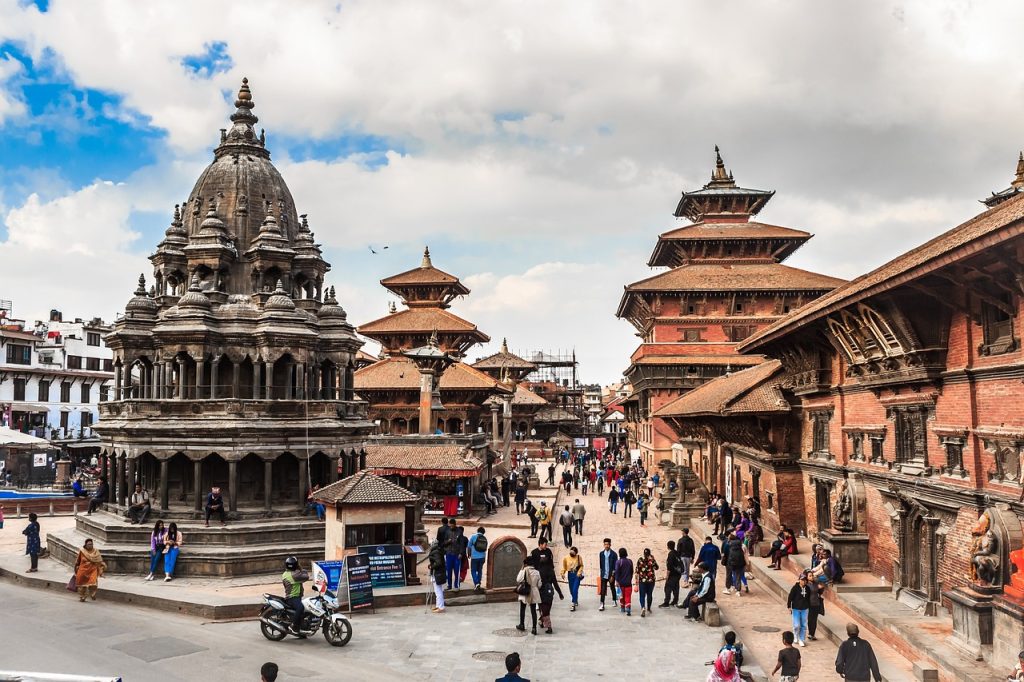
Patan Durbar Square, situated at the heart of Lalitpur district, preserves a vast collection of fine art and architecture, showcasing the intricate carvings and inscriptions on wood and metal crafted by our ancestors. This city, known for its temples, shrines, statues, monuments, festivals, and culture, reflects the exceptional craftsmanship of the past. As you walk through the narrow alleys of Patan, you can still hear the rhythmic tapping of tiny hammers as artisans skillfully work on ornaments and idols. Lalitpur, the second largest town in the Kathmandu Valley, is separated from Kathmandu by the Bagmati River. Located about 5 km from Kathmandu, one can reach Patan within 30 minutes from Thamel, depending on traffic.
Patan is considered the oldest among the three cities of the Kathmandu Valley. Like Kathmandu Durbar Square and Bhaktapur Durbar Square, Patan Durbar Square stands as one of the valley’s historical gems. According to legend, King Veer Deva founded Lalitpur in 299 AD. The name Lalitpur, derived from Sanskrit, means “City of Beauty.” Additionally, the city is known by other ancient names, including Yala and Manigal, each with its own unique story.
Patan, a deeply ancient Newar town, is home to Patan Durbar Square, a marvel of Newari architecture. The square includes a plethora of ancient monuments, temples, shrines, statues, and idols. The surrounding area boasts more than 600 stupas, 136 courtyards, and 55 major temples. Furthermore, the floor of Patan Durbar Square has been paved with red bricks since ancient times, adding to its historic charm.
Kathmandu Valley FAQs
What is Kathmandu famous for?
kathmandu is a Capital of nepal. It is a largest city of Nepal. Kathmandu is and has been for many years the centre of Nepal’s history, art, culture, and economy. It has a multi-ethnic population within a Hindu and Buddhist majority. Religious and cultural festivities form a major part of the lives of people residing in Kathmandu.
What are the famous sites/places of kathmandu?
Pashupatinath, Swyambhunath, Patan durbar Square, Thamel, Shivapuri National Park and many more are the famous places of Kathmandu.
What is the area of Kathmandu Valley?
665 km2 (257 sq mi).
What is the area of Kathmandu District?
Kathmandu covers an area of 413.69 km².
What is the population of Kathmandu Valley?
Around 5 million.
Also Read: Pokhara City

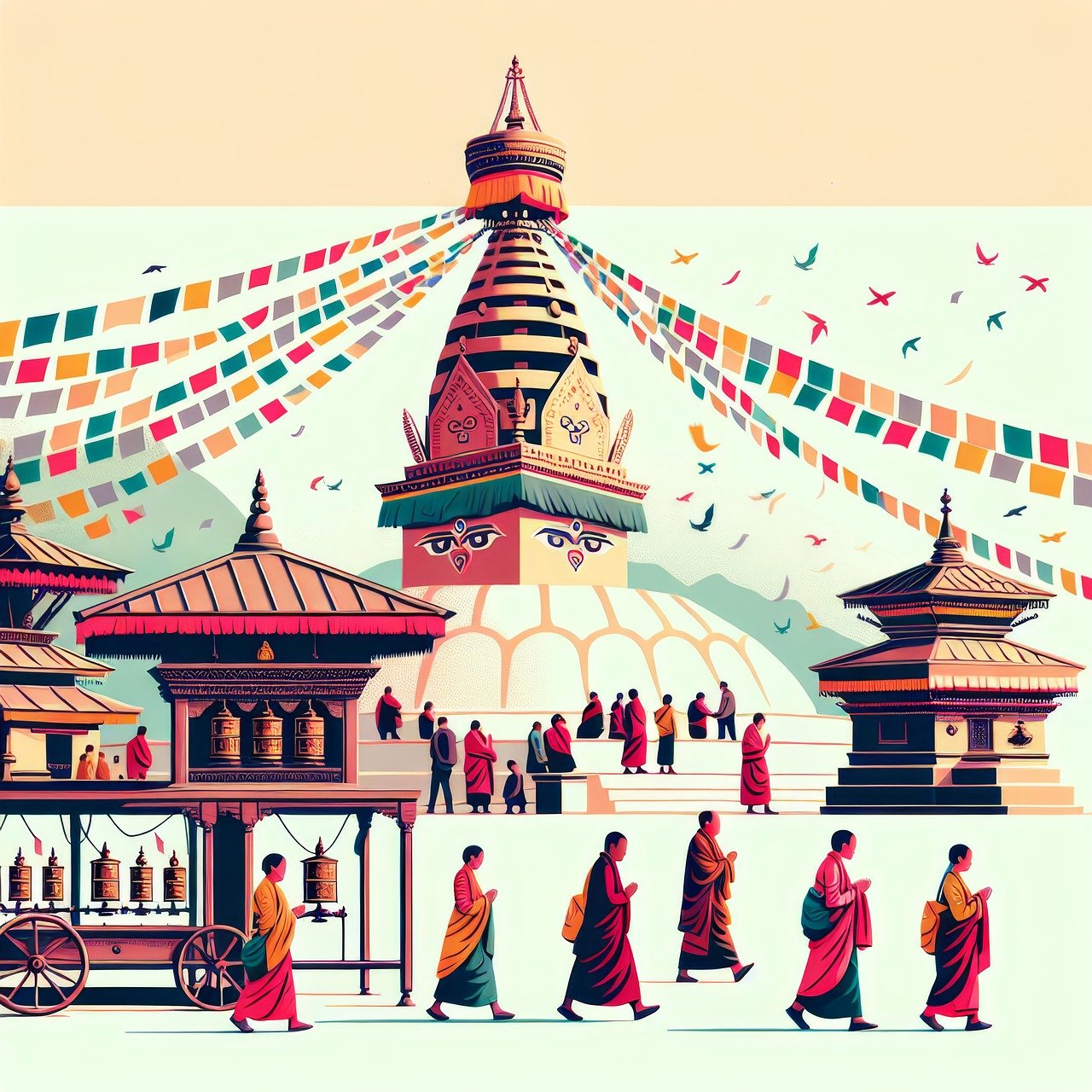
2 thoughts on “Kathmandu Valley: Top 10 Breathtaking Sights”